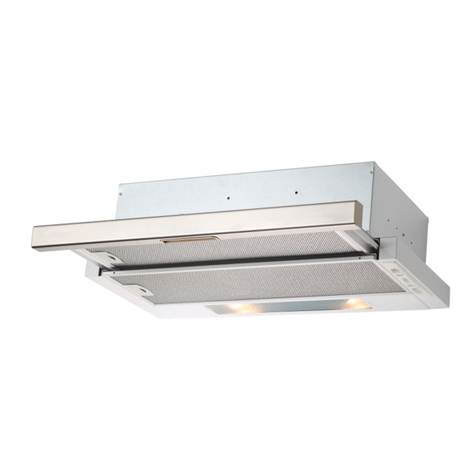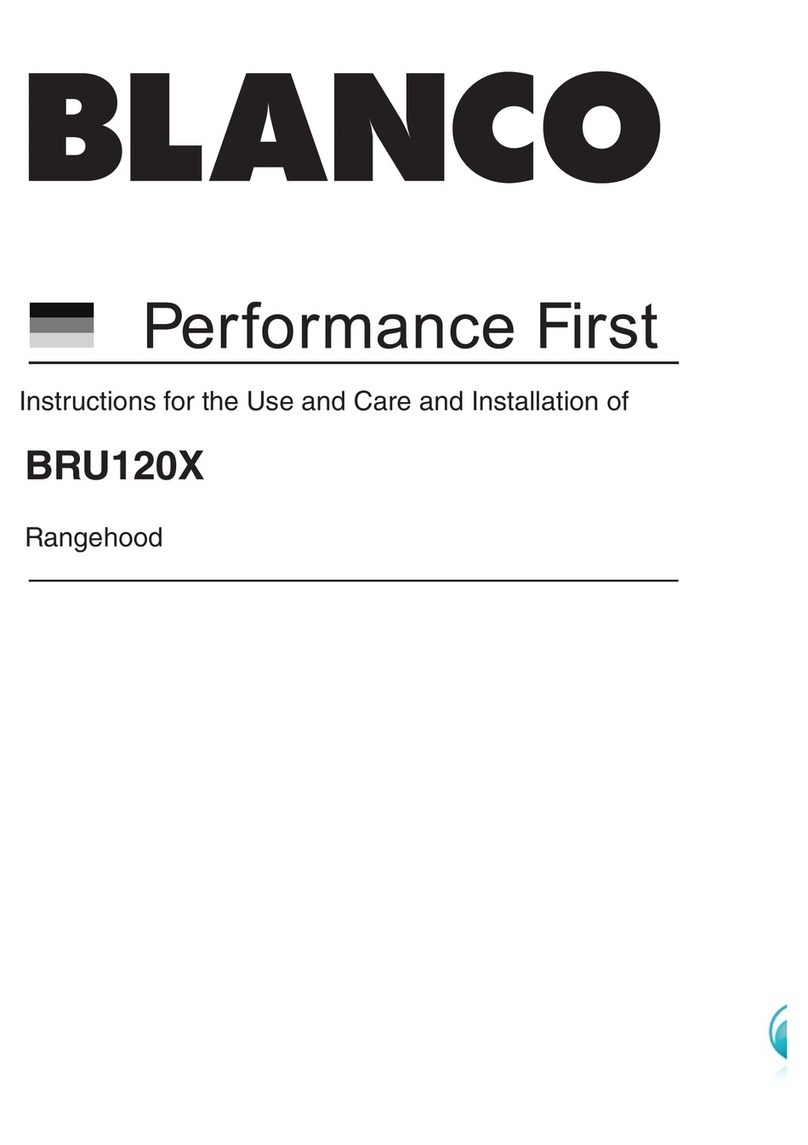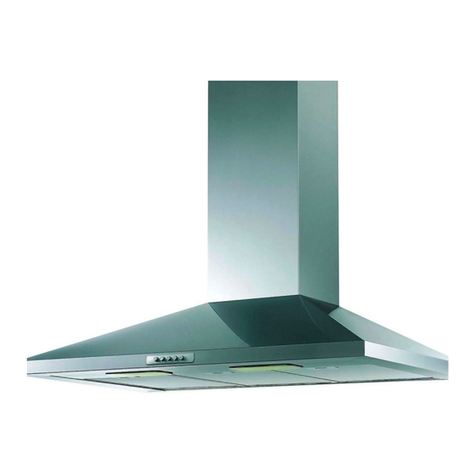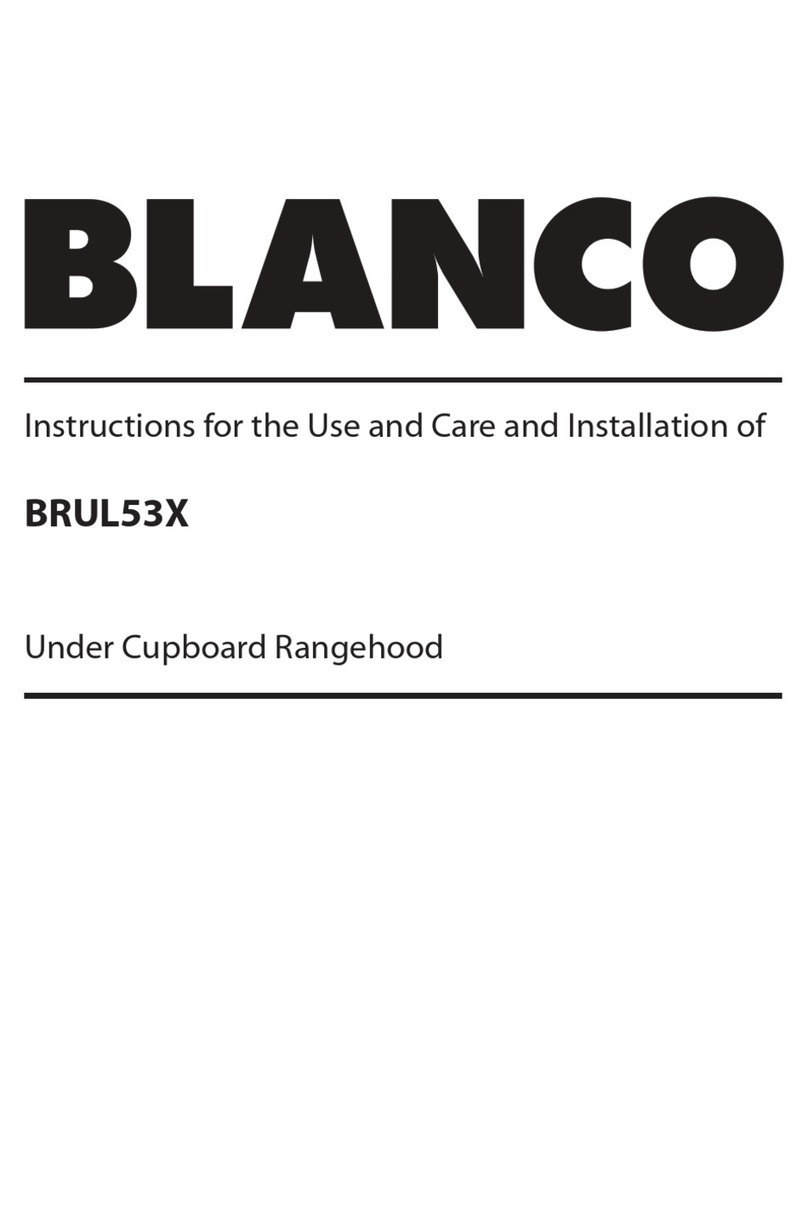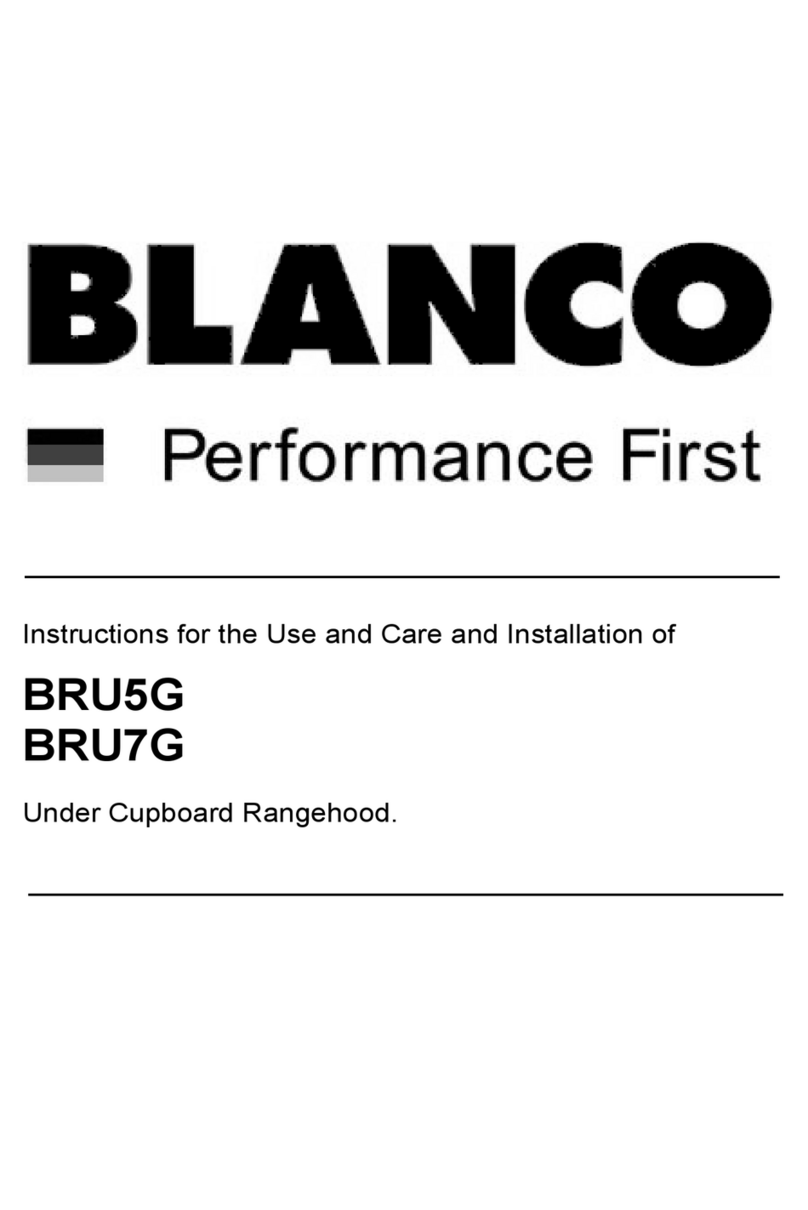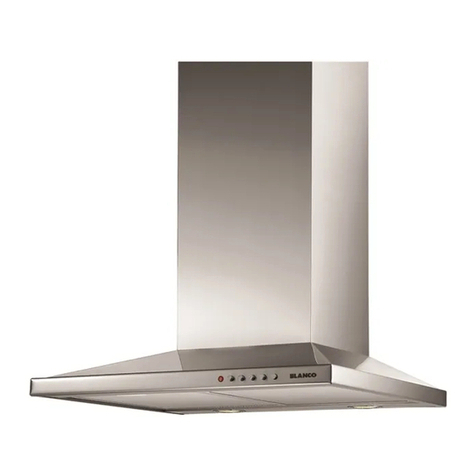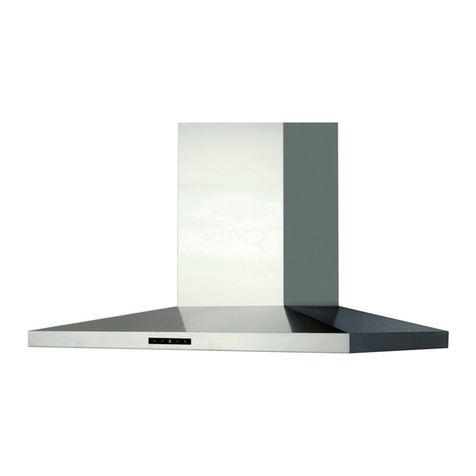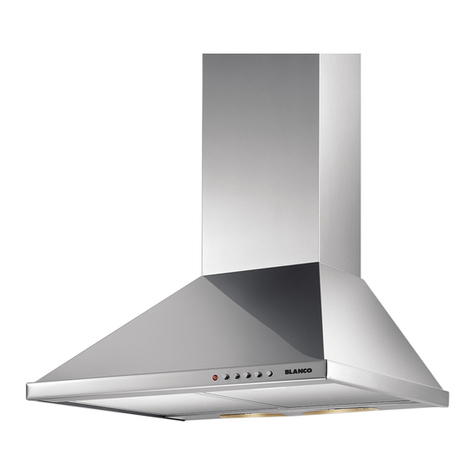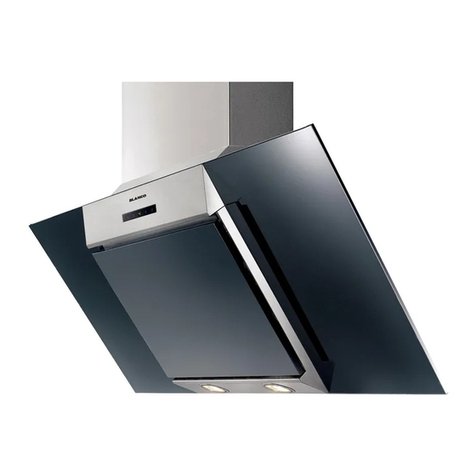GENERAL
Carefully read the following important information regarding installation safety and maintenance. Keep this information
booklet accessible for further consultations.The appliance has been designed for use in the ducting version (air exhaust
to the outside – Fig.1B) or with external motor (Fig.1C).
SAFETY PRECAUTION
1. Take care when the cooker hood is operating simultaneously with an open fireplace or burner that depend on the
air in the environment and are supplied by other than electrical energy, as the cooker hood removes the air from the
environment which a burner or fireplace need for combustion. The negative pressure in the environment must not
exceed 4Pa (4x10-5 bar). Provide adequate ventilation in the environment for a safe operation of the cooker hood.
Follow the local laws applicable for external air evacuation.
GeneralWarnings.
· The appliance is not intended for use by young children or infirm persons without supervision.
· Young children should be supervised to ensure that they do not play with the appliance.
· If the supply cord is damaged, it must be replaced by the manufacturer or its service agent or a similarly qualified
person in order to avoid a hazard.
· There shall be adequate ventilation of the room when the range hood is used at the same time as appliances burning
gas or other fuels.
· Ensure that the range hood is cleaned frequently.
· There is a risk of fire if cleaning is not carried out in accordance with the instructions.
· Do not flambé under the range hood.
Warnings for Installation:
· The exhaust air must not be discharged into a flue which is used for exhausting fumes from appliances burning gas
or other fuels.
· The minimum distance from the hob surface and the lowest part of the range hood must not be less than 65cm. If
the instructions for the hob specify a greater distance, please consider this.
· The regulations concerning the discharge of exhaust air have to be fulfilled.
Exercise care when a rangehood is installed in an area where a gas burner is operating. Depending on the size of the
room, the rangehood may draw from the room air that is necessary for proper combustion of the burner. All Blanco
rangehoods are used for indoor application only
This appliance conforms to the European Directive EC/2002/96, Waste Electrical and Electronic Equipment (WEEE).
By making sure that this appliance is disposed of in a suitable manner, the user is helping to prevent potential
damage to the environment or to public health.
The symbol on the product or on the accompanying paperwork indicates that the appliance should not be treated
as domestic waste, but should be delivered to a suitable electric and electronic appliance recycling collection point.
Follow local guidelines when disposing of waste. For more information on the treatment, re-use and recycling of this
product, please contact your local authority, domestic waste collection service or the shop where the appliance was
purchased.
INSTALLATION INSTRUCTIONS
Electric Connection
The appliance has been manufactured as a class II, therefore no earth cable is necessary.
The connection to the mains is carried out as follows:
BROWN = Lline
BLUE = N neutral
If not provided, connect a plug for the electrical load indicated on the description label. Where a plug is provided, the
range hood must be installed in order that the plug is easily accessible.
An omnipolar switch with a minimum opening of 3mm between contacts, in line with the electrical load and local
standards, must be placed between the appliance and the network in the case of direct connection to the electrical
network.
• The minimum distance between the support surfaces of the cooking pots on the cook top and the lowest part of the
range hood must be at least 65 cm. If a connection tube composed of two parts is used, the upper part must be placed
outside the lower part. Do not connect the range hood exhaust to the same conductor used to circulate hot air or for
evacuating fumes from other appliances generated by other than an electrical source. Before proceeding with the
assembly operations, remove the anti-grease filter(s) (Fig.7) so that the unit is easier to handle.
In the case of assembly of the appliance in the suction version prepare the hole for evacuation of the air.
• FIXINGTOTHEWALL
Drill the holes A as per the distances indicated (Fig.2). Fix the appliance to the wall and align it in horizontal position
to the wall units. When the appliance has been adjusted, definitely fix the hood using the screws A (Fig.5).
For the various installations use screws and screw anchors suited to the type of wall (e.g. reinforced concrete,
plasterboard, etc.). If the screws and screw anchors are provided with the product, check that they are suitable for
the type of wall on which the hood is to be fixed.

